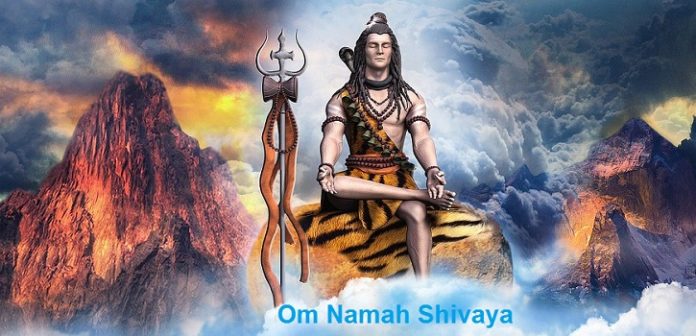There is currently a lot of interest in the Yogic culture and the practice of meditation. People are reeling from pressures of work-related stress and the corresponding loss of balance within the work-life-real-living equation. As science seems to validate and turn our sights back to the practices of yoga and meditation, and a focus on the deeper self to restore that shattered balance, a lot of us find that we are curious about this spiritual culture and what these poses and chants are all about.
The Basics: Understanding Mantras And Chants
Yoga is an art as well as science. It can be described as a spiritual discipline which helps the individual focus on finding and maintaining balance and harmony between the mind, body, and the Universe. Yoga teaches that our body is made of seven energy centers, or chakras. Our interaction with the world and the various situations we are put in, as well as our reactions towards them produces imbalances in these energy centers, resulting in physical, mental and spiritual illnesses. Yoga recommends the use of meditation in combination with mudras and mantras and chakra stones in order to bring these into balance.
Mantras, along with meditation are said to be a very powerful combination in combating imbalances of the mind. The chanting of mantras enables us to turn our awareness inwards. It is an especially useful tool for those who are beginners in the practice of meditation.
Yoga teaches us that mantras are sound forms of the divine. Different mantras evoke different aspects of the Great Consciousness.
In this article, we delve into mantras, more specifically, one of the most basic mantras in Yoga: Om Namah Shivaya or Aum Namah Shivaya
Origin Of Om Namah Shivaya
Om Namah Shivaya(ॐ नमः शिवाय) is easily the most important, and perhaps the most popular, and therefore, recognizable chant in the mantra collective. It originated as a product of the Shaivism sect of the Hindu religion 2500 years ago. In Shaivism, the god Shiva is considered the most influential, and the most relevant among the Hindu gods.
Shiva is most popularly recognized as the god of destruction. But according to the Shaivites, he is the creator (in the avatar of Brahma), as well as the preserver (typically seen in the avatar of Vishnu), in addition to the most potent destructive force in the universe. He is what is called the totality.
The Meaning Of Om Namah Shivaya
Om: According to the Hindu beliefs of origin, there was nothing but a void of pure existence before the Universe came into being. Vibrations and energies, which are central to life and spiritual existence in the Hindu scriptures, were non-existent at this time. The pure void that existed at the beginning generated the Om vibration, which gave birth to the Universe as we know it today.
Namah: This can be literally translated to ‘bow down’.
Shivaya: This part of the mantra easily translates to Shiva. But it goes deeper than that: in this mantra, Shiva is said to represent the inner self.
In essence, the mantra expresses devotion to the inner self. The three elements together translate to I bow to the inner self. According to Rodney Birney, MD, Om Namah Shivaya (ॐ नमः शिवाय) is a love song to ourselves.
In certain sects of Shaivism, Nama Shivaya represents the unifying power that Shiva exerts over the five elements:
| Na | Earth |
| Mah | Water |
| Shi | Fire |
| Va | Air |
| Ya | Sky |
This is meant to represent that universal consciousness is one and that the universe is absolute in the Hindu philosophy.
This number five can be seen in various manifestations in the world, and the cosmos in general. Other than the five base elements reflected above, we also see it in the senses, the fingers, toes, acts, etc. There is further meaning associated with each of these five elements of the Namah Shivaya mantra. These have to do with their association with the body and the way in which they represent the chakras, or energy centers in the human body. The utterance of these five syllables of the Om Namah Shivaya (ॐ नमः शिवाय) mantra are said to balance energies from five out of the seven chakras in the body in an ascending order.
Na starts at the first chakra, located at the base of the body, at the tailbone. It grounds you by connecting your energy to the Earth. It deals with emotions, survival, and ownership.
Ma rises into the second chakra and is called your creative, expressive center. It keeps your creative juices flowing and keeps your sexual and emotional selves healthy.
Si rises higher to the next chakra, which lies in the solar plexus, also known as the Manipura (translated: lustrous gem). This is also sometimes called the warrior chakra since the combination of the chakra’s senses of wisdom, decisiveness, and personal power can be comparable to the feeling of a wise warrior going out to war.
Va rises further still and resonates in the fourth chakra at the heart. This middle chakra helps us connect our lower chakras to our higher heavenly qualities. It opens the soul to love and be loved.
Ya, the final syllable, resonates in the fifth chakra, found at the throat. When this chakra is successfully balanced, you will be able to speak with love, kindness, and truth.
Om, said to be the heart of Lord Shiva, resonates in the head. The sixth chakra, called the Third Eye is located here. Starting the chant with this syllable enables us to tune in to this higher consciousness.
The Vedicfeed states that the five elements also have the following meanings associated with them:
Na – the concealing grace of the Lord
Mah – the Earth, or the world
Shi – the Lord Shiva
Va – the revealing grace of the Lord
Ya – the Soul, also known as the Atman
This is a reflection of the five acts associated with Shiva: creation, maintenance, destruction, concealment, and graceful revelation.
THE METHOD: HOW TO CHANT Om Namah Shivaya (ॐ नमः शिवाय)
This chant can be performed anywhere, since there are no rituals or ceremonies involved. The only important requirement is that you perform the chant while sitting upright and giving the chant your full attention. It is recommended that the mantra is chanted 108 times. Many people use the rudraksha beads to keep a track of the count. It is said that the numerous benefits of the mantra can only be experienced if the chanter is able to visualize complete surrender to the inner self.
Significance Of Chanting Om Namah Shivaya (ॐ नमः शिवाय)
The sound vibration of this mantra is said to be a pure expression of our deepest self. We allow those core vibrations of the mantra to tune into our true inner selves when we chant it continuously.
Repetition of the mantra is said to greatly improve concentration. Additionally, the chanting of Om Namah Shivaya is said to remove toxicity that may have accumulated within the body in the thoughts and emotions due to difficulties and negativity within the environment. Our actions and behaviors are thus cleansed, and in tune with those of Shiva, the source of everything. When the body and soul are thus cleansed, a six-fold blessing is said to be reflected from the cosmos because of the positive energy emitted by the individual.
- The chanting of Om Namah Shivaya (ॐ नमः शिवाय) reveals the path of peace and clarifies your vision in life.
- Regularly chanting Om Namah Shivaya improves your intellectual ability.
- As negative emotions like aggression and ego are balanced out, you will see that stress and its related illnesses will also be driven away through consistent chanting of Om Namah Shivaya.
- It is said to sway away negativity and attract positive energies towards the chanter.
- The Om Namah Shivaya chant is said to be so powerful that it can minimize the negative impact of astrological grahas.
- The chanting of this mantra is also said to help you understand your inner self and open yourself to your true potential.
In essence, chanting Om Namah Shivaya (ॐ नमः शिवाय) taps into the energies starting at the highest center, the source, and then dips down through the lowest chakra and moves up through the corresponding chakras again, cleansing the chakras themselves, as well the associated elements, and the emotional issues surrounding them. That is why it can be safely said that this chakra is a love-song to ourselves.
SOURCES :
blog.mindvalley.com/
https://www.doyou.com/
https://www.scienceandnonduality.com
https://vedicfeed.com
https://blog.sivanaspirit.com
https://www.mea.gov.in/




[…] diet (upholding ahimsa), and began devotional practices to Sri Siva (at that stage I was chanting Om Namah Shivaya, or the Mahamrityunjaya Mantra). Just a couple months of practicing meditations and mantra japas, I began to feel his Ananda. […]